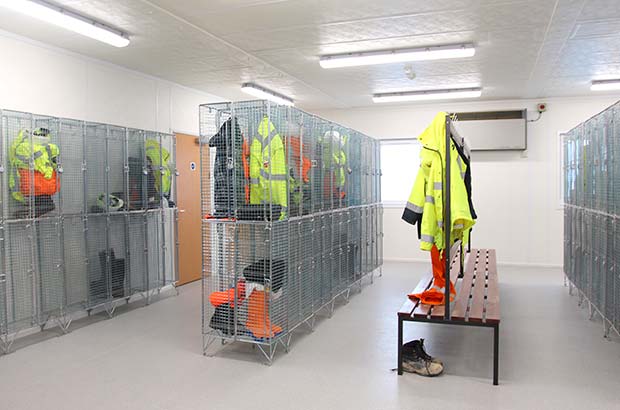A drying room offers a number of distinctive benefits. Not only does it help dry clothes or equipment faster and more efficiently, but it also protects buildings against damp and can cut down on energy costs by as much as 75 per cent.
 When wet clothing and equipment is left to dry in a space without sufficient ventilation, moisture will remain in the air. This results in a humid environment that slows down the drying process, but also leads to condensation and creates the ideal conditions for damp and mould growth.
When wet clothing and equipment is left to dry in a space without sufficient ventilation, moisture will remain in the air. This results in a humid environment that slows down the drying process, but also leads to condensation and creates the ideal conditions for damp and mould growth.
Tom Byrne, from Climate Dry – an online solutions specialist, which supplies a wide range of climate control products, said: “Mould is a major problem. Not only does it eat away at anything that you are trying to dry, but it also creates a strong musty odour and releases toxic spores that can lead to serious illness, skin irritation and breathing difficulties if inhaled. It also has a habit of finding its way into plaster and building materials, which can cause expensive or even irreparable structural damage.
“Fire crews, coastguards and the military have long used dehumidification to dry out equipment and clothes, such as uniforms, wet suits and other rescue clothing, but drying rooms are now becoming more widespread in civilian life.”
Since the pandemic, countless buildings and commercial spaces have upgraded their facilities with a dehumidifier-powered drying room for people travelling to work and school on foot or by bicycle throughout the year.
Tom added: “To keep moisture and damp away from working areas, wet coats and umbrellas from the daily commute need a dedicated place to dry. With the increase of people cycling to work throughout the year, many offices have turned these spaces into drying rooms to handle the humidity caused by hangers filled with wet clothing.
“Drying rooms are a great asset in other sectors, including the hotel industry. While hotel owners would love to promise their guests sunshine and clear blue skies, good weather cannot be guaranteed on every holiday. The next best thing is a drying room for wet coats and footwear from days out in the rain. As well as improving guest experiences, this will stop damp air from spreading through the building.”
There is not much that can be done about bad weather, but being able to dry clothes quickly and efficiently, while completely removing moisture from the atmosphere, means that the problems caused by humidity and condensation can be prevented.
Tom said: “Creating an efficient drying room takes more than just installing a heater. While heat will lift moisture from clothing and equipment, in an unventilated space, this saturated air will be left to linger.
“As air warms up, it becomes able to hold a higher water content. When the air cools down, or when it can hold no more water at the current temperature, relative humidity levels will reach 100 per cent or ‘dew point’. This is when water droplets are released and condensation forms.
“A dehumidifier, on the other hand, will circulate humid air throughout a space, physically removing moisture from the air as it flows through the system. To accelerate the drying process, a high-quality dehumidifier will also convert the energy taken out of the room as moisture to provide useful heat.
“That means faster drying and cheaper bills. In fact, the potential energy savings are huge, often achieving cost savings of 75 per cent compared to traditional heat and ventilation energy usage.”
For more information, please visit: climatedry.co.uk




Comments are closed.